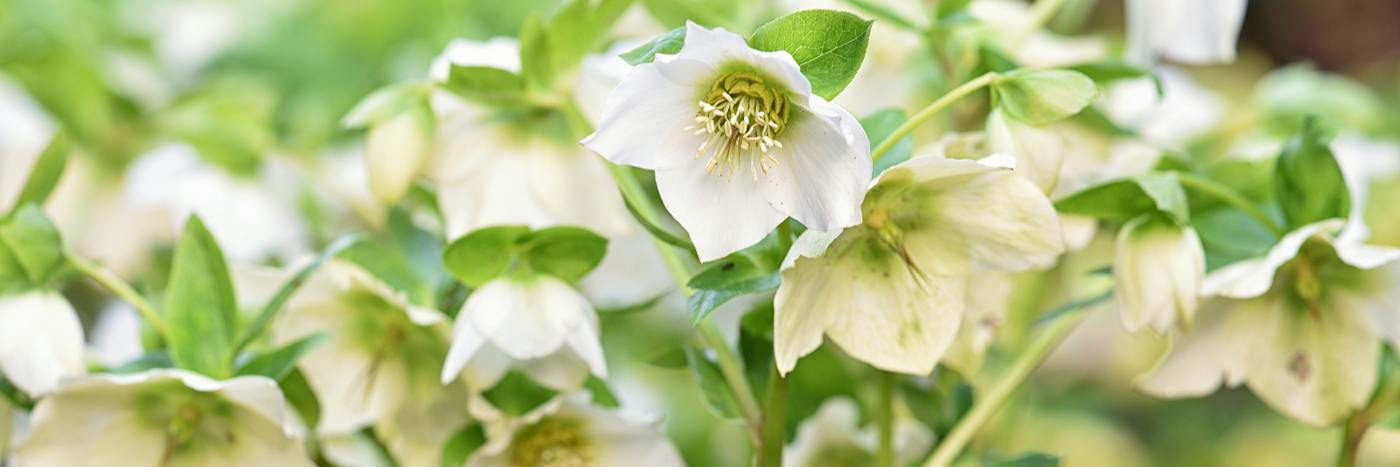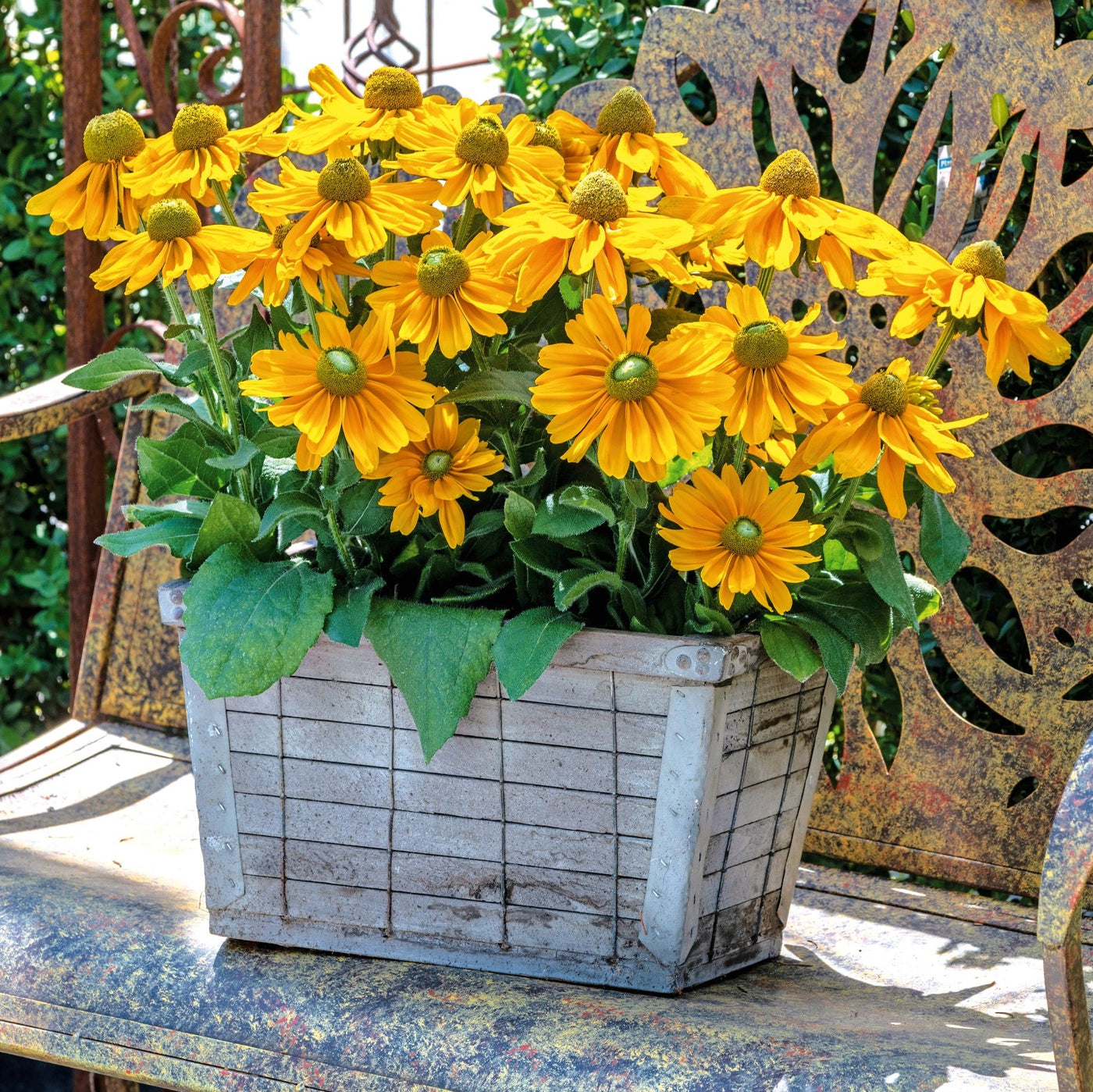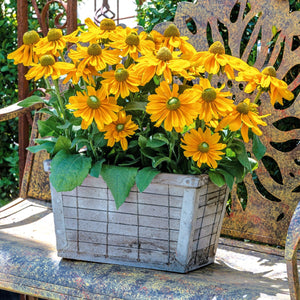Feature Plants

Handsome Hellebores
Hellebores, often the earliest of flowers in our spring gardens, are truly remarkable plants that usher in the season with their nodding blooms. Did you know that these enchanting flowers can actually bloom while snow is still on the ground? It's like they have a secret pact with winter, bravely pushing through to bring a splash of colour to our gardens when we need it most. These hardy perennials thrive in a shade to part shade location with good drainage and consistent moisture.
Tips for Growing Hellebores in Your Garden:
🌱 Plant in a shady to part shade location
🌱 They like rich, well-draining soil. Add compost and mix in well before planting
🌱 Keep them moist but not soggy, especially during dry spells in their first year
🌱 Give them some room to spread - approximately 18 inches apart for most varieties
🌱 Cut back old leaves in late winter / early spring before new flowers and foliage emerge for a tidier look.
- Kristin Ego

Peach Fuzz - Pantone Colour of the Year 2024
It's fun every season to see what plants we can tie in with Pantone's Colour of the Year!
For 2024 they have chosen Peach Fuzz, a velvety gentle peach tone with all-embracing spirit.
According to Leatrice Eiseman, Executive Director of the Pantone Color Institute
"In seeking a hue that echoes our innate yearning for closeness and connection, we chose a color radiant with warmth and modern elegance. A shade that resonates with compassion, offers a tactile embrace, and effortlessly bridges the youthful with the timeless."
 Here are a few of our selections inspired by Peach Fuzz for 2024...
Here are a few of our selections inspired by Peach Fuzz for 2024...
Pictured below, clockwise from Top Left... Dahlia 'Fairway Spur', Ranunculus 'Amandine Salmon' , Gladiolus 'Sabor', Astilbe 'Peach Blossom', Achillea 'Firefly Peach Sky', Agastache 'Peachie Keen', Digitalis 'Dalmatian Peach', Heuchera 'Peachberry Ice', Geum 'Mai Tai', Hemerocallis 'Orange Smoothie'.

- Kristin Ego

Feature Plant: Rudbeckia
Overview and History
Rugged durability, extreme heat tolerance, and summer-long flower power make Rudbeckia one of the most popular perennials sold today in many parts of North America. It’s no wonder as it can be found naturally and thrives in all 48 contiguous states and in all 10 provinces of Canada.
Thanks to North American botanist John Bartram, seeds of our native Rudbeckia were sent to Europe via Englishman Peter Collins. This is how Carl Linnaeus (1707-1778) came across them and named them after Olof Rudbeck (1660-1740), a teacher at Uppsala University in Sweden with whom he worked for. (Linnaeus is now known as the “father of taxonomy’s” system of binomial nomenclature.)
It is said that as Linnaeus was putting together his nomenclature, he chose the name Rudbeckia because the tall flower reflected Rudbeck’s tall stature, and the ray-like petals bore “witness that you shone among savants like the sun among stars.” What a wonderful tribute!

Rudbeckia 'Cherry Brandy', 'Maya', 'Autumn', 'Amarillo Gold'
Ten of the Most Popular Species of Rudbeckia
-
Rudbeckia hirta– A colorful biennial or short-lived perennial that is winter hardy to USDA Zones 3-9. Characterized by course, rough leaves with short hairs (hirta is Latin for hairy) and single daisy-like flowers, this rudbeckia is one of the most prolific species with the most cultivars from breeding companies.
-
Rudbeckia fulgida– Fulgida is one of the most well-known Rudbeckia thanks to two varieties: ‘Goldsturm’ that was Perennial Plant Association’s (PPA) Perennial Plant of the Year in 1999 and now AAS Winner ‘American Gold Rush’ that is PPA’s Perennial Plant of the Year for 2023.
-
Rudbeckia laciniata- Laciniata can grow to 12’ tall, but most varieties are 2-3’ tall. Flowers are 3-4″ across, with cone-shaped, greenish-yellow centers and back-tilted golden rays. Leaves are characteristically a five-pointed palmately compound leaf.
-
Rudbeckia grandiflora – A rhizomatous perennial that can grow up to 48” tall. Colonies can be quite large and spreading.
-
Rudbeckia maxima – A species native to the southern United States with upright leaves that make it discernible from other Rudbeckia types.
-
Rudbeckia occidentalis – A western coneflower native from Colorado west to Washington, including northern California.
-
Rudbeckia triloba – A short-lived perennial native to eastern North America that easily reseeds but does not become weedy. Characterized by a three-pointed palmately compound leaf.
-
Rudbeckia missouriensis – A species native to the central prairie states.
-
Rudbeckia subtomentosa – Noted for its quilled flowers, Henry Eilers is one of the most commonly known variety in this species.
-
Rudbeckia amplexicaulis – Noted for its drooping flower petals, it is native to the Midwest plains and south-central U.S.

Rudbeckia fulgida 'Goldsturm'
How to Grow Rudbeckia in the Garden
Sowing seeds:
Plant seeds 4-6” apart after all danger of frost. Prior to seeding, make sure the soil surface is clump free and lightly packed as a firm seedbed is needed as seedlings emerge. Cover seeds lightly and keep them moist. Seeds can also be started indoors 3-4 weeks earlier but must be kept in a sunny location once leaves are visible.
Watering and Fertilization:
Rudbeckia prefer moderate, but consistent soil moisture. Avoid over-watering or drought stress. Drought stress can cause browning of the leaf edges. Avoid overhead watering late in the day to reduce the risk of Botrytis, especially under cool conditions.
Once established, Rudbeckia are drought and heat tolerant. Rudbeckia require only moderate fertilization. Fertilize monthly with a well-balanced fertilizer.
Light:
Rudbeckia need to be planted in full sun. Rudbeckia is a “long day plant,” requiring a minimum of 13-14 hours of light flower initiation.
High light levels throughout the season will improve the plant’s quality. Unfortunately, hot temperatures, especially at night, cause stretching.
Prevent Diseases:
To prevent Powdery Mildew water plants in the early morning or late afternoon, not during the heat of the day. Allow time for plants to dry before nightfall.
Divide Plants:
To prevent overcrowding, Rudbeckia are easily divided into clumps every 3-4 years. Divide in early spring or fall.
In the Landscape:
Given that Rudbeckia are native to many areas of North America, they are ideal in mass plantings or in naturalized areas.
Pollinators:
They attract bees and butterflies, and birds love the seed heads.
The National Garden Bureau recognizes and thanks Ernst Benary of America, Inc., an NGB member, as author and contributor to this fact sheet.
- Kristin Ego
- Tags: Pollinator Gardens Rudbeckia


